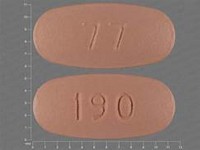Capecitabine
CLINICAL USE
Antineoplastic agent (antimetabolite):
DOSE IN NORMAL RENAL FUNCTION
1.25 g/m2 twice daily for 14 days, repeated after 7 days
PHARMACOKINETICS
DOSE IN RENAL IMPAIRMENT
GFR (mL/MIN)
30–50 75% of dose (950 mg/m2 twice daily) use with care10–30 Avoid
DOSE IN PATIENTS UNDERGOING RENAL REPLACEMENT THERAPIES
IMPORTANT DRUG INTERACTIONS
Potentially hazardous interactions with other drugs
ADMINISTRATION
Reconstition
–
Route
Oral
Rate of Administration
–
Comments
Give after food
